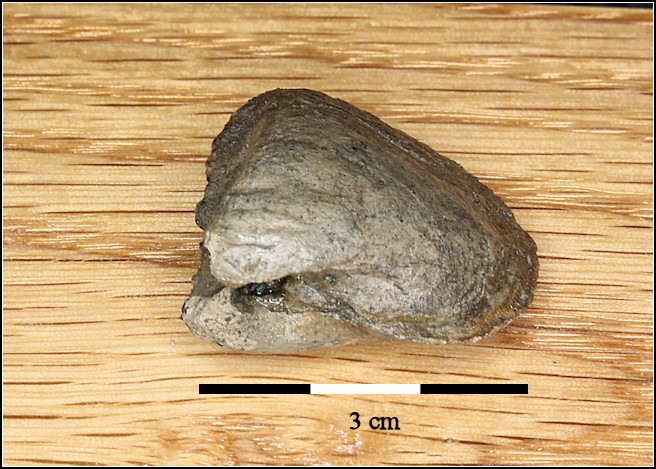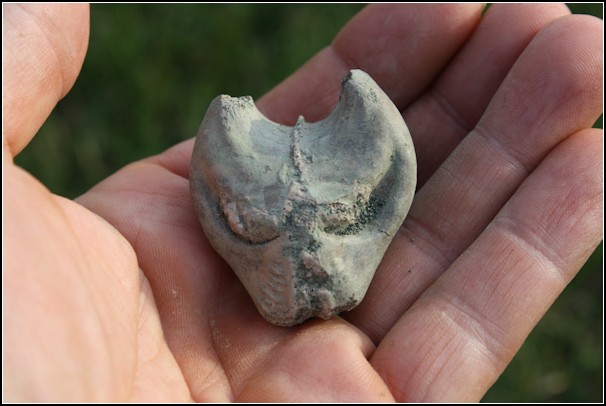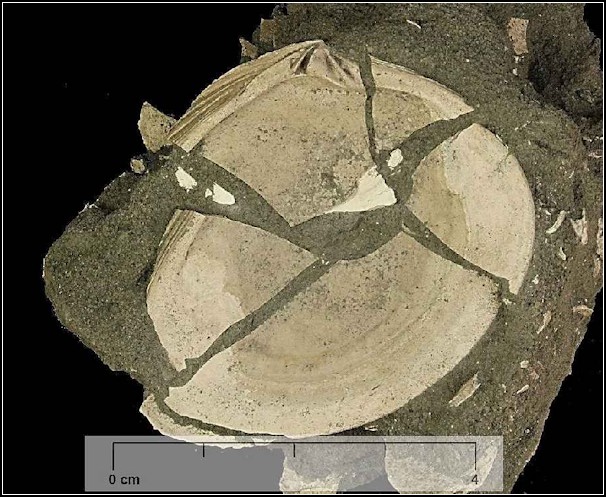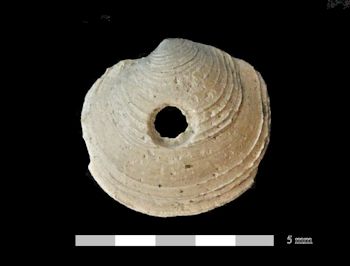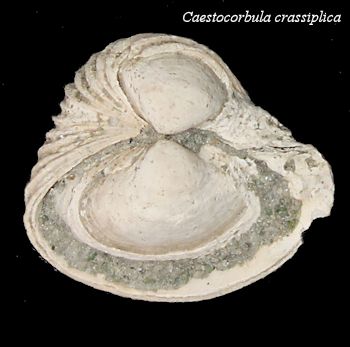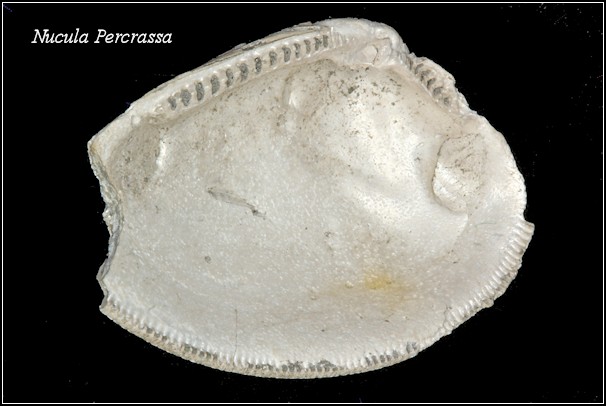|
Clams Class: Bivalvia (Linnaeus, 1758) Clams have two shells connected by two adductor
muscles and have a powerful burrowing foot.
In most New Jersey collecting locations
fossil clams are only found as internal molds or casts known as
steinkerns. This is the result of acidic ground water dissolving the
original shell material (see
aragonite dissolution discussion). A few locations in New Jersey do produce
original shell material and I've included examples of both types of
preservation. (Richards et al, 1962) lists well over 100 species from New Jersey.
Most of the clams found in NJ are internal molds or casts which do not hold up well to stream wear. I find trying to identify steinkerns difficult and normally don't even try. Monmouth County, NJ
This example is from the old Inversand marl pit, workers there referred to these as "squirrel heads".
A few areas in southern New Jersey do produce original shell material.
Most of these shells are
Examples of original aragonite shell material (5 mm) Lucina sp. with bore hole
Hexagonal platelets of aragonite give mother of pearl it's iridescence.
References and Notes: compression fracturing - compaction-induced breakage occurs when muddy sediments compress. Shells will rotate towards the horizontal plane as a response to stress, but remained largely intact unless in contact with other shells (M. Zuschin et al, Richards, H. G., 1958. The Cretaceous fossils of New Jersey. (Part 1). New Jersey Dept. of Conservation and Economic Development. New Jersey Geology Survey Bulletin, vol. 61, 266 p., 46 pls.
|
||
